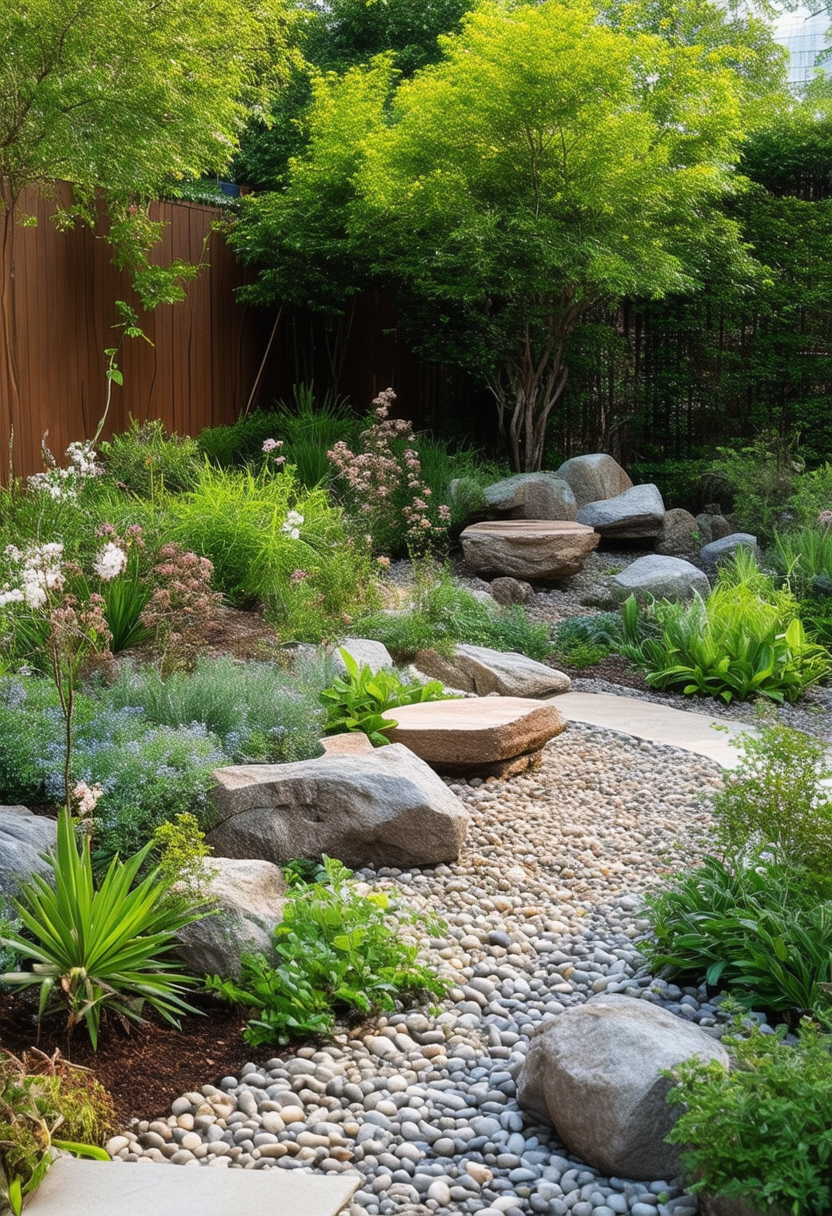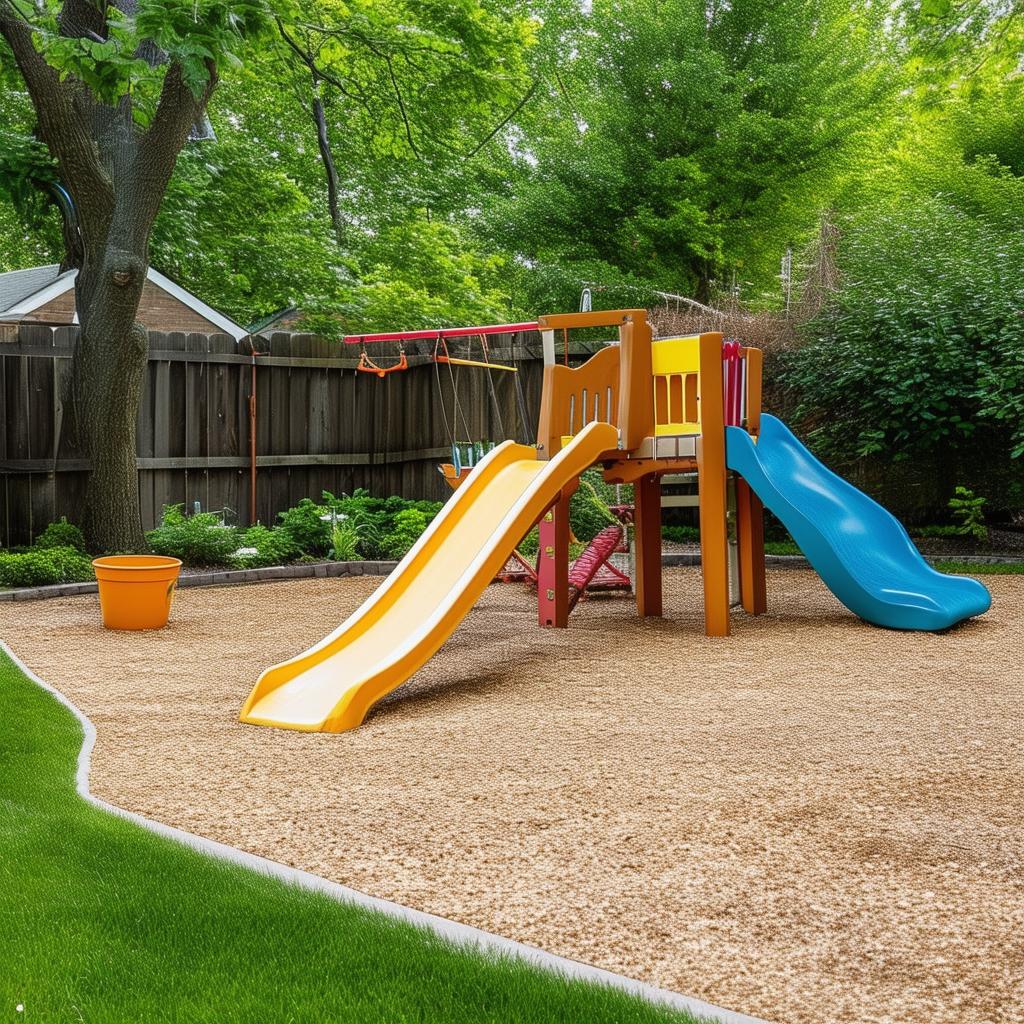In a world filled with endless possibilities, there is no canvas quite like the backyard garden to unleash your creativity and design prowess. Whether you’re a seasoned green thumb or just starting out, this guide will take you on a journey through the art of backyard garden design. From choosing the right plants to layout and décor, prepare to transform your outdoor space into a masterpiece that reflects your unique style and vision. Let’s dive in and discover the secrets to unlocking your inner garden artist!
Table of Contents
- Explore Your Personal Style and Preferences
- Utilize Natural Elements for a Harmonious Design
- Incorporate Functional Spaces for Outdoor Activities
- Create a Sustainable Garden with Eco-Friendly Practices
- Design a Colorful and Vibrant Landscape with Strategic Planting
- Maximize Space and Optimize Layout for Efficiency
- Choose the Right Plants for Your Climate and Soil Type
- Incorporate Artistic Features for a Unique Touch
- Implement Water Features for a Tranquil Atmosphere
- Maintain and Evolve Your Garden Design Over Time
- Q&A
Explore Your Personal Style and Preferences
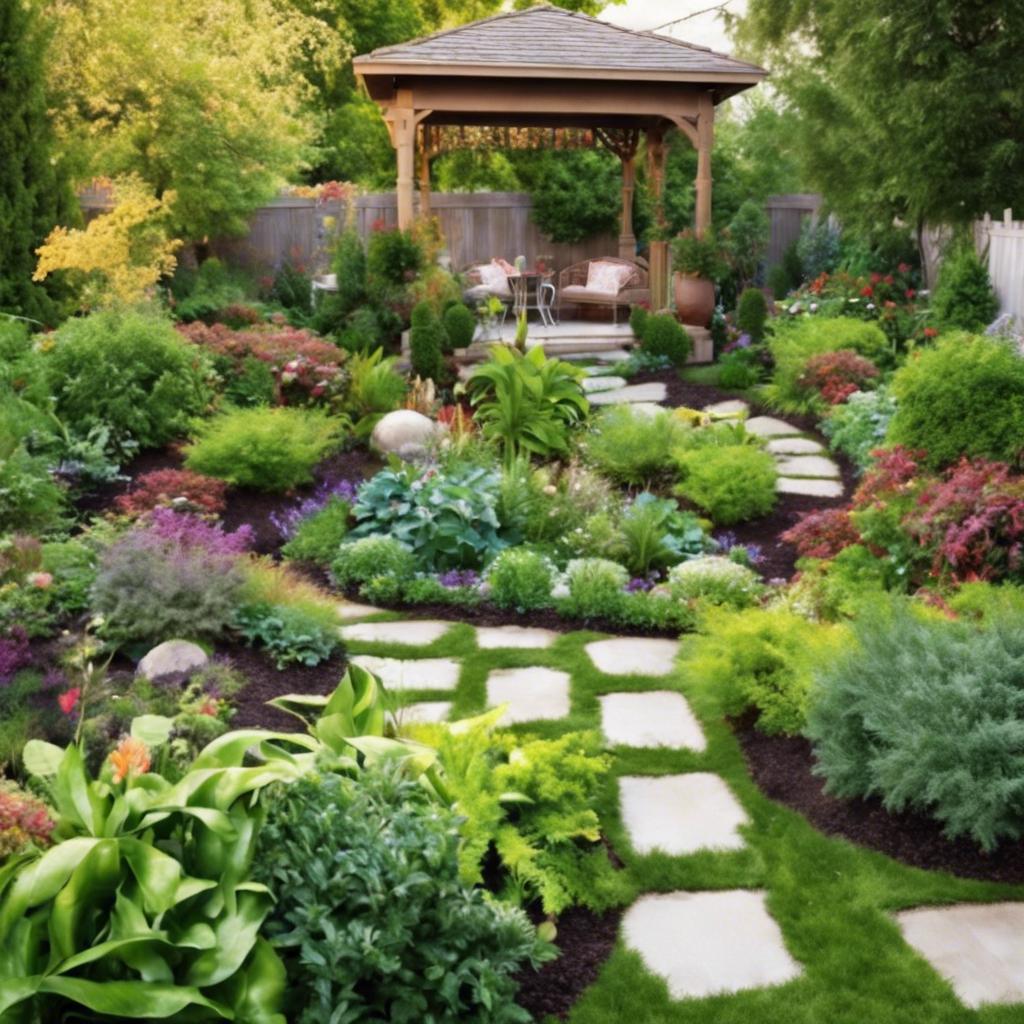
Creating a backyard garden design that truly reflects your personal style and preferences can be a fun and rewarding experience. Whether you’re a fan of minimalist aesthetics or a lover of vibrant colors and textures, your backyard is the perfect canvas to unleash your creativity. By exploring different design elements and landscaping ideas, you can transform your outdoor space into a tranquil oasis that suits your unique taste.
When it comes to designing your backyard garden, think about the overall theme or style you want to achieve. Are you drawn to modern, sleek designs with clean lines and geometric shapes? Or perhaps you prefer a more rustic look with natural materials and cozy seating areas. Consider incorporating elements such as outdoor furniture, decorative lighting, and water features to enhance the ambiance of your garden. Experiment with different plants and flowers to add pops of color and texture to your outdoor space.
Don’t be afraid to mix and match different design elements to create a backyard garden that truly represents your personality. Play around with various textures, colors, and patterns to create visual interest and depth in your outdoor space. Remember, your backyard garden is an extension of your home, so make sure it reflects your individual style and preferences. With a little creativity and imagination, you can transform your backyard into a beautiful and inviting retreat that you’ll enjoy for years to come.
Utilize Natural Elements for a Harmonious Design
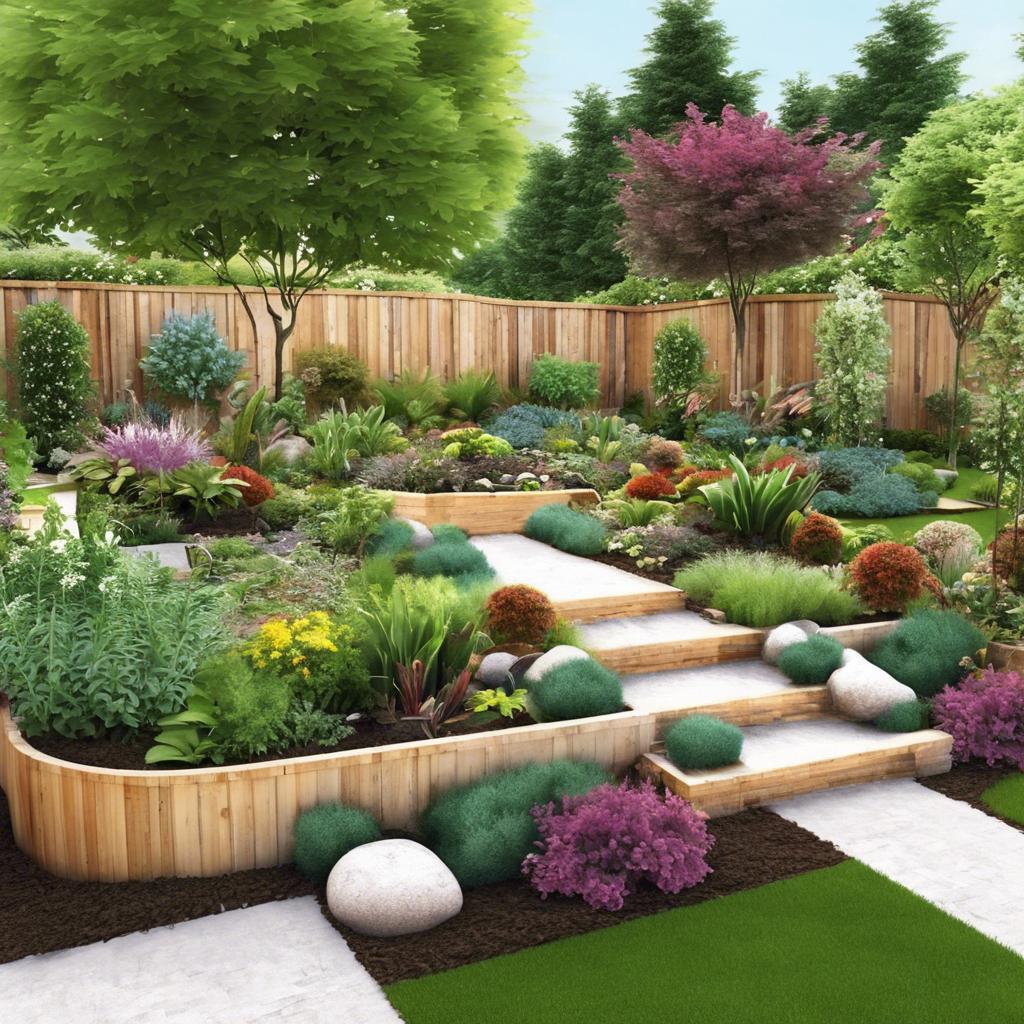
When designing your backyard garden, it’s essential to tap into the beauty and tranquility of nature. By incorporating natural elements into your design, you can create a harmonious space that promotes relaxation and peace. Embrace the organic flow of the outdoors by using elements such as:
-
- Native Plants: Choose indigenous plant species that thrive in your area, creating a sustainable ecosystem and attracting local wildlife.
-
- Rock Features: Utilize natural stones and rocks to add texture and structure to your garden, creating focal points and pathways.
-
- Water Elements: Incorporate a small pond, fountain, or waterfall to bring the soothing sound of water into your space, enhancing the tranquil ambiance.
Remember, the key to a harmonious design is to work with the natural elements already present in your backyard, enhancing their beauty and creating a cohesive space that flows effortlessly.
By embracing the beauty of nature in your backyard garden design, you can unleash your creativity and create a space that not only looks aesthetically pleasing but also promotes a sense of well-being and relaxation. Experiment with different combinations of plants, rocks, and water features to find the perfect balance that resonates with you.
| Plant Type | Characteristics |
|---|---|
| Perennials | Durable and long-lasting |
| Succulents | Low maintenance and water-efficient |
| Herbs | Culinary and aromatic |
Incorporate Functional Spaces for Outdoor Activities
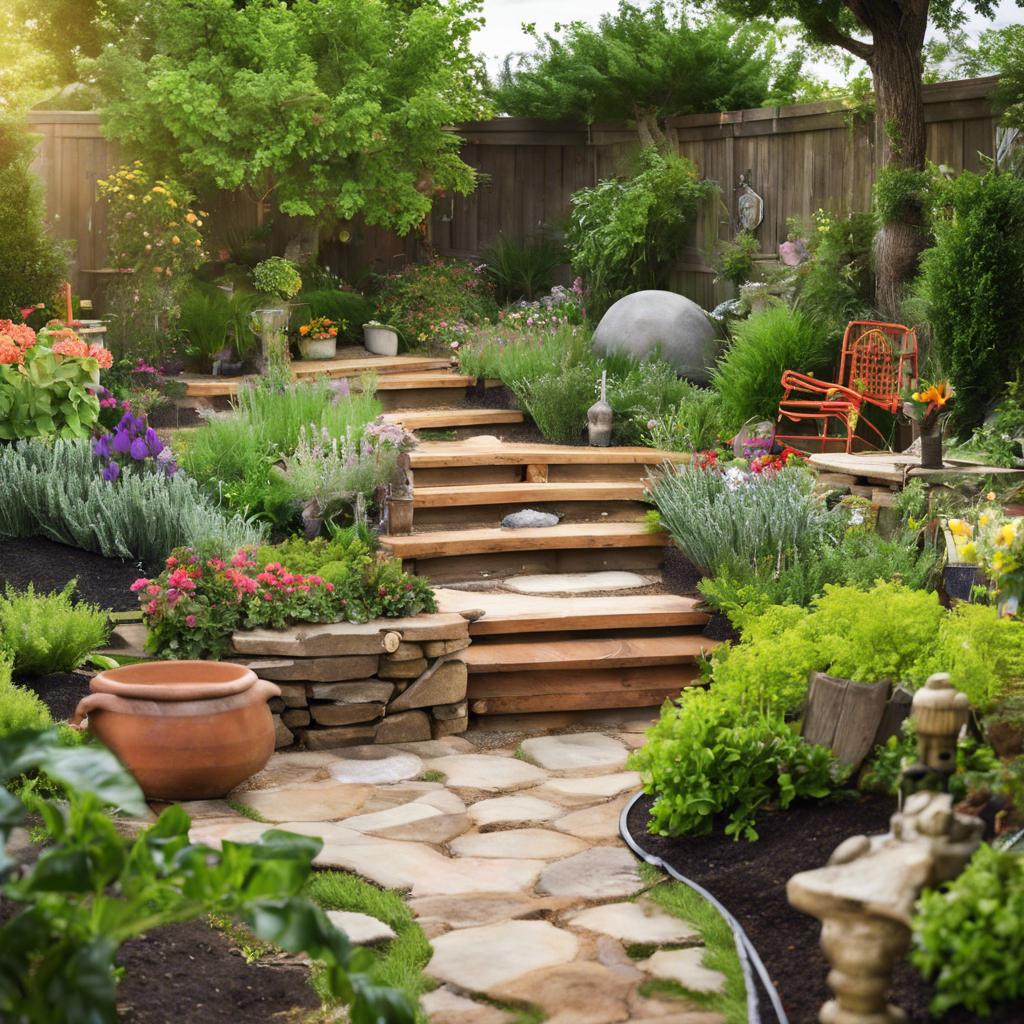
Having a well-designed backyard garden can turn your outdoor space into a functional and beautiful area for relaxation and entertainment. When incorporating functional spaces for outdoor activities, it’s essential to consider the needs and preferences of your household. By unleashing your creativity, you can transform your backyard into a versatile space that caters to a variety of interests.
One way to enhance your backyard garden design is by creating designated areas for different outdoor activities. Consider adding a fire pit for cozy evenings, a vegetable garden for fresh produce, and a seating area for social gatherings. By dividing your outdoor space into distinct zones, you can maximize its functionality and create a well-balanced environment for relaxation and recreation.
In addition to creating functional spaces, it’s important to incorporate elements that add visual interest to your backyard garden. Think about adding water features like a fountain or pond, decorative lighting for ambiance, and ornamental plants for texture and color. By blending practicality with aesthetics, you can create a backyard garden that is not only enjoyable to use but also visually appealing. As the saying goes, “The garden suggests there might be a place where we can meet nature halfway.”
Create a Sustainable Garden with Eco-Friendly Practices

In order to , it’s important to unleash your creativity and think outside the box. One way to do this is by incorporating native plants into your garden design. Native plants are adapted to the local climate and soil conditions, so they require less water, fertilizer, and pesticides to thrive. Plus, they provide habitat for local wildlife and promote biodiversity.
Another way to design a sustainable garden is by utilizing rainwater harvesting techniques. By installing a rain barrel or a system of rain gardens, you can capture and store rainwater to use for watering your plants. This not only conserves water but also reduces runoff and erosion, benefiting both your garden and the environment.
Furthermore, consider incorporating composting into your garden routine. Composting organic waste such as kitchen scraps, yard trimmings, and leaves not only reduces waste sent to landfills but also creates nutrient-rich soil for your garden. This closed-loop system promotes soil health and fertility, while minimizing the need for synthetic fertilizers.
Design a Colorful and Vibrant Landscape with Strategic Planting

Are you ready to transform your backyard into a vibrant and colorful oasis? With strategic planting, you can unleash your creativity and design a landscape that will capture the attention of all who visit. By carefully selecting plants that complement each other in color and texture, you can create a harmonious and visually stunning garden.
One key factor in designing a colorful landscape is to consider the different seasons and how your plants will change throughout the year. By choosing a mix of annuals and perennials that bloom at different times, you can ensure that your garden remains colorful and vibrant all year round. Additionally, incorporating foliage plants with interesting textures and colors can add depth and visual interest to your landscape.
| Plant Type | Color |
|---|---|
| Hydrangeas | Blue, Pink, Purple |
| Tulips | Red, Yellow, Orange |
| Hostas | Green, Variegated |
Remember that strategic planting involves more than just choosing colorful plants. It also involves considering the layout and arrangement of your garden. By creating focal points and incorporating pathways and seating areas, you can create a garden that is not only visually appealing but also functional. So roll up your sleeves, grab your gardening tools, and start designing a colorful and vibrant landscape that will be the envy of your neighborhood!
Maximize Space and Optimize Layout for Efficiency
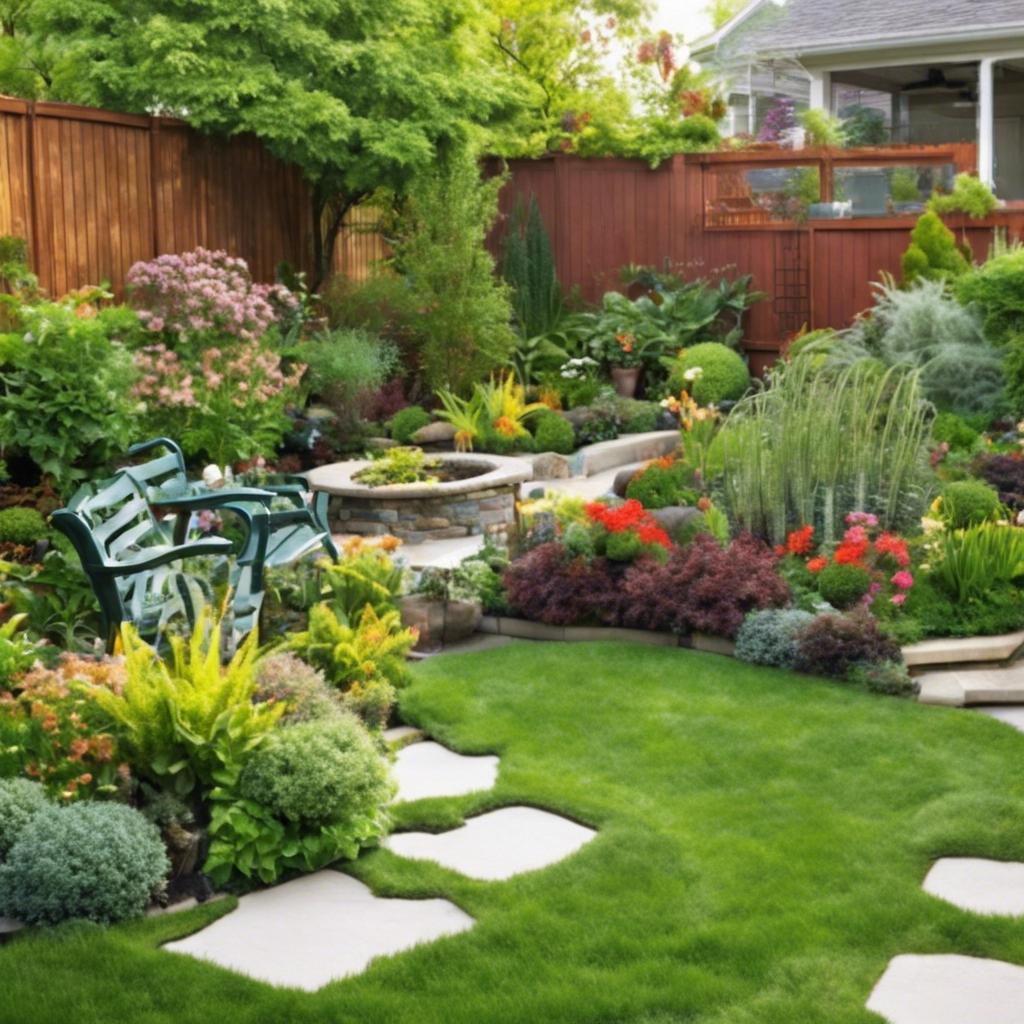
In a world where outdoor spaces are becoming more precious than ever, it’s essential to make the most out of every square foot in your backyard. By carefully planning and designing your garden layout, you can create a functional and beautiful outdoor oasis that maximizes space and optimizes efficiency.
One key aspect to consider when designing your backyard garden is to think vertically. Utilize vertical space by installing trellises, hanging planters, or vertical gardens to grow plants upwards instead of outwards. This not only saves valuable ground space but also adds visual interest to your garden. Additionally, consider incorporating multi-functional furniture pieces such as benches with built-in storage or tables that can double as planters.
Another tip to maximize space in your backyard garden is to create designated zones for different activities. Whether it’s a cozy seating area for relaxing, a dining area for entertaining, or a play area for kids, dividing your outdoor space into distinct zones helps to optimize layout and functionality. By carefully planning the placement of each zone, you can create a harmonious and well-organized garden that complements your lifestyle and enhances your outdoor experience.
by thinking creatively and strategically about your backyard garden design, you can unleash your creativity and transform your outdoor space into a functional and efficient oasis. Don’t be afraid to experiment with different layouts, materials, and plants to create a garden that reflects your unique style and personality. With a thoughtful approach, you can maximize space, optimize layout, and create a backyard garden that brings joy and beauty to your outdoor retreat.
Choose the Right Plants for Your Climate and Soil Type
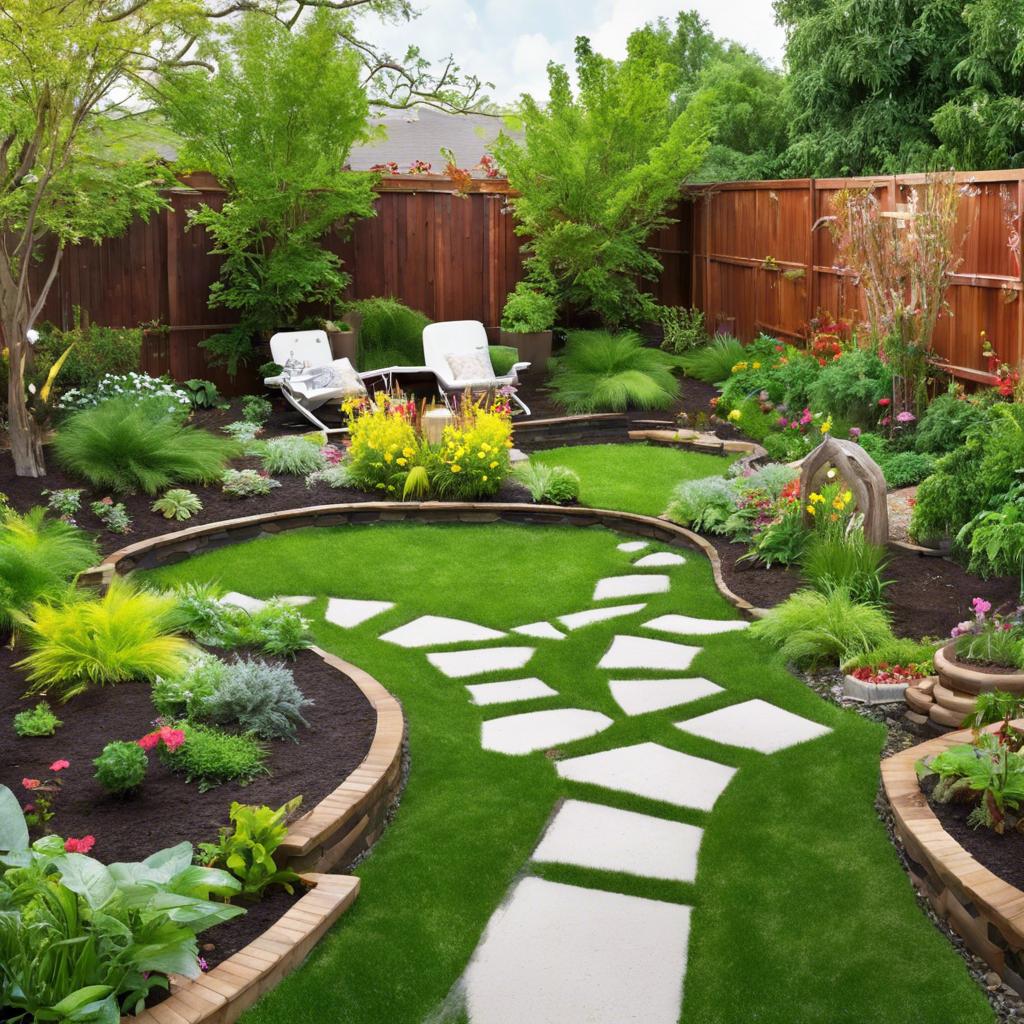
When it comes to designing your backyard garden, one of the most important aspects to consider is choosing the right plants for your climate and soil type. By selecting plants that are well-suited to your specific environment, you can ensure they thrive and flourish, creating a beautiful and sustainable garden space.
Before you start planting, take some time to research which plants are best suited to your climate and soil type. Consider factors such as temperature, humidity, and sunlight levels, as well as the pH and drainage of your soil. By choosing plants that are well-adapted to these conditions, you can help them grow strong and healthy, reducing the need for excessive watering, fertilizing, and pest control.
When planning your garden design, think about creating a diverse and harmonious planting scheme that incorporates a variety of colors, textures, and shapes. Mix and match different types of plants to create interest and contrast, and experiment with different arrangements and groupings to find the perfect balance. Remember to also consider the height and spread of each plant, ensuring they have enough room to grow and thrive without overcrowding each other.
Incorporate Artistic Features for a Unique Touch
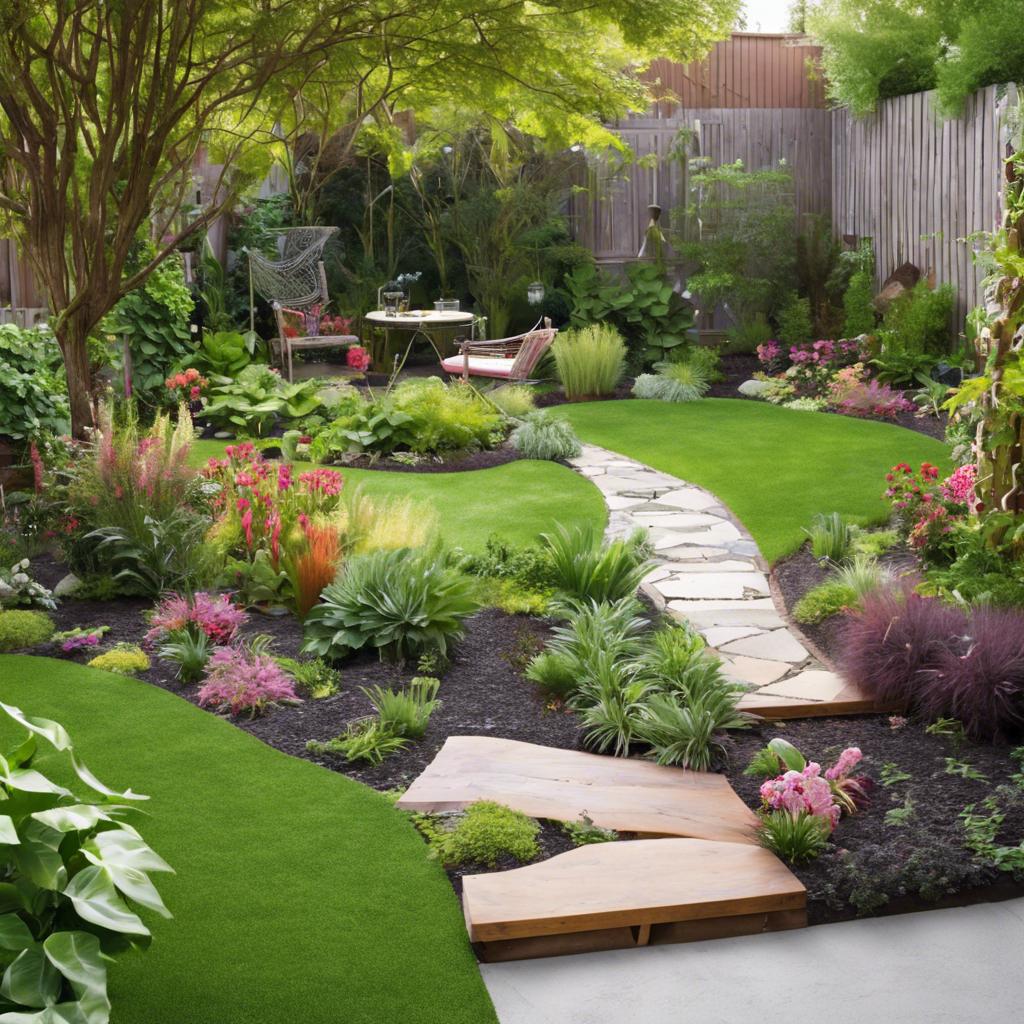
One way to elevate the design of your backyard garden is to incorporate artistic features that add a unique touch to the space. By infusing creativity into your outdoor oasis, you can create a visually stunning and personalized environment that reflects your style and personality. Whether you are a fan of modern art, rustic charm, or whimsical decor, there are countless ways to express your creativity in your garden design.
When thinking about incorporating artistic features into your backyard garden, consider adding elements such as sculptures, mosaics, or murals. These eye-catching pieces can serve as focal points in your garden, adding visual interest and intrigue to the space. Additionally, you can incorporate elements like colorful tiles, stained glass, or repurposed materials to add texture and dimension to your garden design. By mixing and matching different artistic elements, you can create a one-of-a-kind space that is truly unique.
Another way to infuse artistic flair into your garden design is by incorporating nature-inspired artwork. Consider installing a water feature with a cascading sculpture or adding a mural of a lush forest scene to a blank wall. These artistic touches can help create a sense of tranquility and beauty in your garden, enhancing the overall ambiance of the space. By embracing your creativity and incorporating artistic features into your backyard garden, you can transform it into a stunning and inspiring retreat that you will love spending time in.
Implement Water Features for a Tranquil Atmosphere
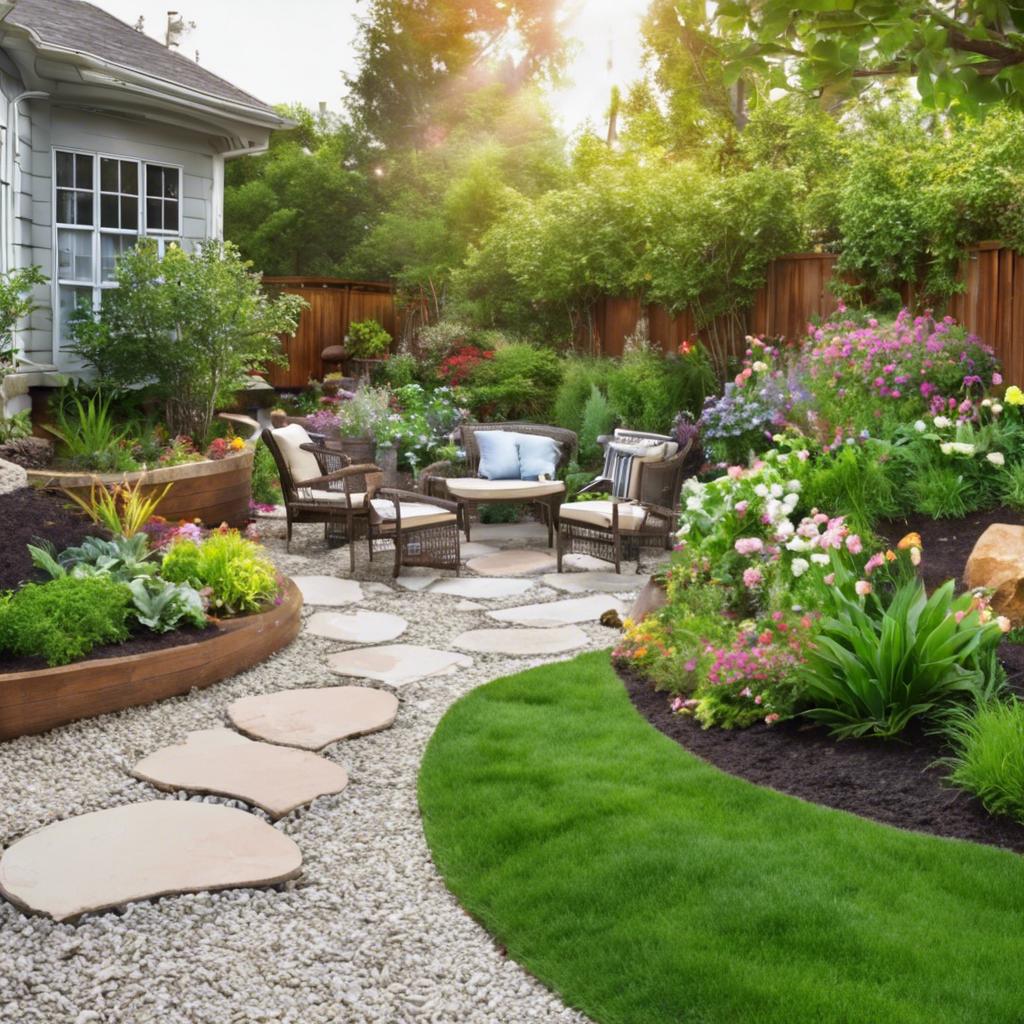
When it comes to creating a tranquil atmosphere in your backyard garden, implementing water features can be a game changer. Not only do water features add a sense of serenity and calmness to your outdoor space, but they also provide a visual focal point that can enhance the overall aesthetic of your garden design.
One creative way to incorporate water features into your backyard garden is by installing a small pond or fountain. A pond can be home to colorful fish and aquatic plants, adding movement and life to your garden. Meanwhile, a fountain can provide soothing sounds of running water, creating a peaceful ambiance that is perfect for relaxation or meditation.
Consider adding a water feature that complements the style and theme of your garden. Whether you prefer a modern, minimalist design or a more rustic, natural look, there are endless options to choose from. From sleek, contemporary water walls to traditional tiered fountains, let your creativity shine through in designing a tranquil oasis that reflects your personal taste and aesthetic vision.
Maintain and Evolve Your Garden Design Over Time

One of the joys of having a backyard garden is the ability to continuously evolve and maintain its design over time. Your garden is like a blank canvas, waiting for your creativity to bring it to life. With some thoughtful planning and a little bit of elbow grease, you can transform your outdoor space into a beautiful oasis that reflects your personal style and preferences.
To unleash your creativity in designing your backyard garden, start by envisioning the overall look and feel you want to achieve. Consider factors such as the size and shape of your space, the types of plants you want to incorporate, and any specific themes or color schemes you want to incorporate. Creating a vision board or mood board can help you visualize your ideas and make it easier to bring them to life.
Once you have a clear vision in mind, it’s time to get your hands dirty and start designing. Experiment with different layouts, plant combinations, and decorative elements to see what works best in your space. Don’t be afraid to try new things and make adjustments as needed. Remember, your garden is a living, breathing entity that will continue to evolve over time, so have fun with the process and let your creativity shine.
Q&A
Q: Why is backyard garden design important?
A: Backyard garden design is important because it allows you to create a peaceful and beautiful outdoor space where you can relax and connect with nature.
Q: How can I unleash my creativity in designing my backyard garden?
A: To unleash your creativity in designing your backyard garden, consider incorporating unique and unexpected elements such as sculptures, water features, and vertical gardens.
Q: What are some tips for maximizing space in a small backyard garden?
A: To maximize space in a small backyard garden, consider using vertical gardening techniques, utilizing multi-functional furniture, and creating different levels with raised beds or decking.
Q: How can I incorporate sustainable practices into my backyard garden design?
A: You can incorporate sustainable practices into your backyard garden design by using native plants, implementing a rainwater harvesting system, composting organic waste, and using eco-friendly materials for hardscaping.
Q: What are some popular backyard garden design trends for this year?
A: Some popular backyard garden design trends for this year include creating outdoor living rooms, incorporating edible landscapes, and utilizing technology like smart irrigation systems and outdoor lighting.
Q: How can I maintain my backyard garden design once it’s been established?
A: To maintain your backyard garden design, it’s important to regularly water, prune, weed, and fertilize your plants, as well as keep an eye out for pests and diseases. Regularly updating and refreshing your design can also help keep it looking its best.
